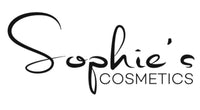Get Clear Skin with Face Reality Advanced Acne Med
Acne is one of the most common skin challenges in the U.S. and it’s not just limited to teenagers. In fact, it impacts all ages, races, and genders. Nearly 60 million Americans have active acne and 20 million are at risk of developing scar tissue as a result.
WHAT’S YOUR DEFENSE?
One effective defense is benzoyl peroxide (BPO), a chemical in the organic peroxide family that has been used in acne treatment formulas for more than 80 years. It works as a bleaching and peeling agent and is antimicrobial, increases cell turnover, reduces the bacterial count, clears up existing acne, and prevents future breakouts.
Benzoyl peroxide is a white or off-white water-soluble crystalline powder that offers the following benefits for blemished and impure skin:
- It peels skin like salicylic or resorcinol, reducing blockages.
- It kills the bacterium Propionibacterium acnes (P.acnes).
- It has anti-inflammatory properties that reduce pain and discomfort associated with many lesions.
- It eliminates fatty acids and oils in the skin.
THINGS YOU SHOULD KNOW ABOUT USING BENZOYL PEROXIDE & ADVANCED ACNE MED:
EXPECT TO BE A BIT DRY!
Benzoyl peroxide can be extremely irritating and drying. During the initial weeks, you may experience some dryness, redness, itching, flaking, tightness, or mild peeling. This is temporary and will subside as your skin adapts. Try to put up with some peeling as it will eventually go away. Those who can push through the initial dryness and light flaking get the fastest results. However, if you are uncomfortably dry or you are a darker skin type, then let us know. We can offer some helpful tips for getting through the dry phase.
AVOID EYE AREA AND LOWER NECK
Do not use benzoyl peroxide on your neck or eye area as the tissue is too delicate and it will over dry and irritate the skin too much.
NO EYE CREAM IN THE PM
Do not use eye cream or moisturizer around the eyes or neck because the benzoyl peroxide will migrate through the cream and cause irritation and possible swelling.
AVOID EYE IRRITATION
Allow benzoyl peroxide to dry before going to bed. If your eyelids get irritated, try changing your pillowcase more often. When you are wearing acne med at night, it will get on the pillowcase.
SMILE LINES
This area tends to be the most sensitive area on the face and will be the first place you see irritation and dryness. You can put a very thin layer of Rhonda Allison Pro Salve on this area to protect it for a few days and then resume product regular product use.
WORKING OUT? REMOVE BENZOYL PEROXIDE
Do not wear benzoyl peroxide when you expect to perspire. If you plan to exercise, engage in physical labor, or be outside under the hot sun, wash it off first or it will irritate your skin.
WILL BLEACH FABRIC
Benzoyl peroxide will bleach fabric, so we suggest wearing a white shirt when using it. Also, use a white washcloth when removing the product from your skin. Use white pillowcases when you start wearing benzoyl peroxide overnight. Make sure to wash your hands with soap following each application to avoid bleaching towels.
ALLERGIC REACTION
Dry or irritated skin is often not an allergy. Allergies to benzoyl peroxide are rare but do occur occasionally. Dry skin does not constitute an allergic reaction. An allergy is characterized by itching, swelling, or burning associated with a rash similar to a mild case of poison ivy dermatitis. If you are experiencing unusual irritation or an allergic reaction occurs, stop using Acne Med and contact us immediately.
DILIGENCE PAYS OFF
If you skip a day or two or only spot treat, this break in your treatment gives a chance for acne to form. You will never get clear if you skip your home care treatment plan.
USE OVER THE ENTIRE ACNE-PRONE AREA
While spot treating can be effective for those who are mildly blemish-prone, those with inflamed acne must use benzoyl peroxide serum over the entire acne-prone area, every day. This is what will help prevent future breakouts.
